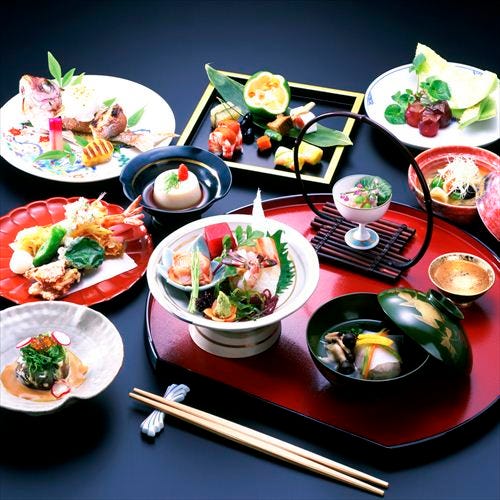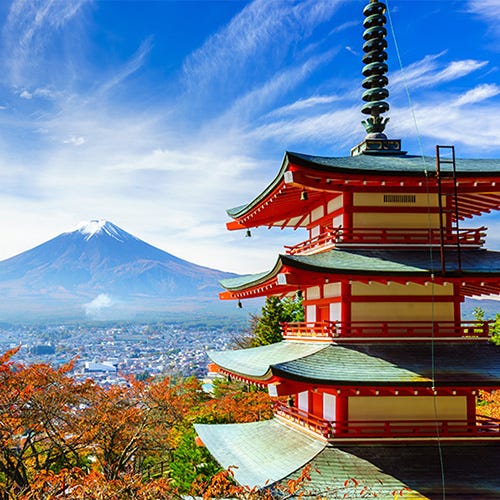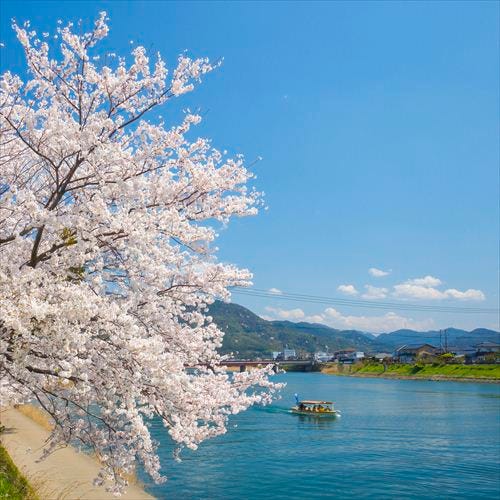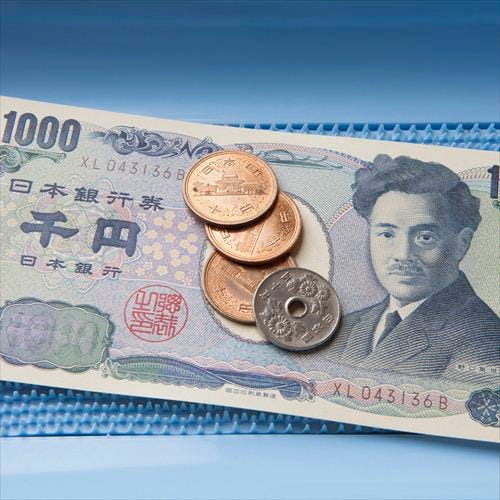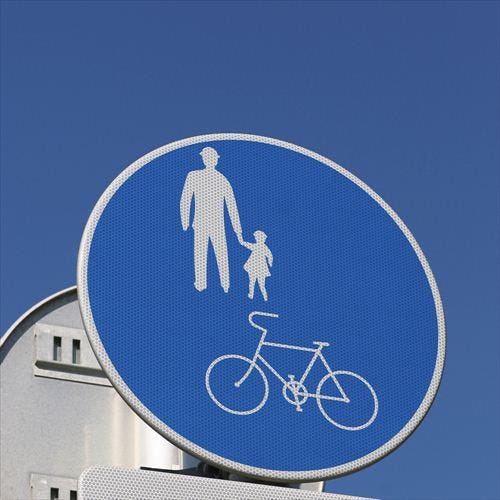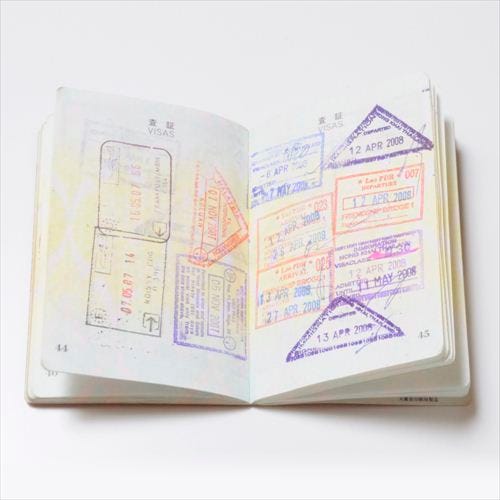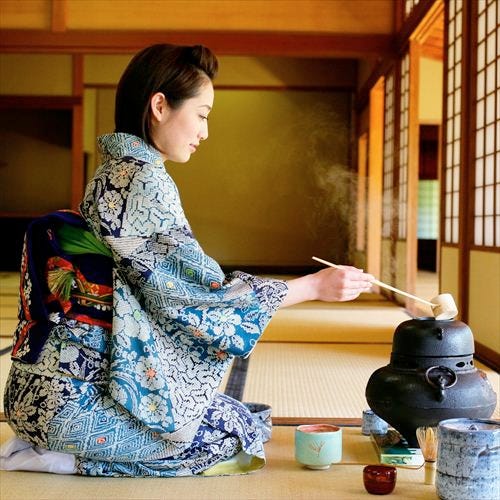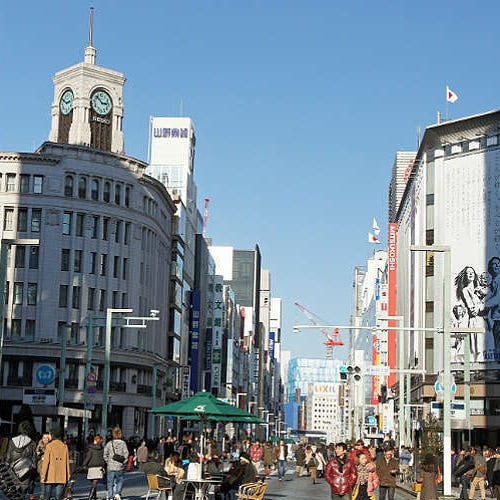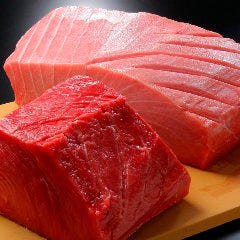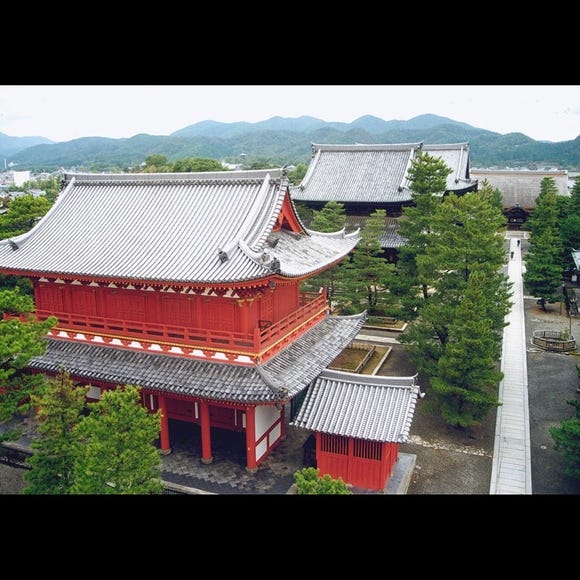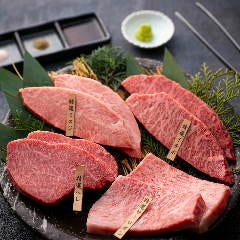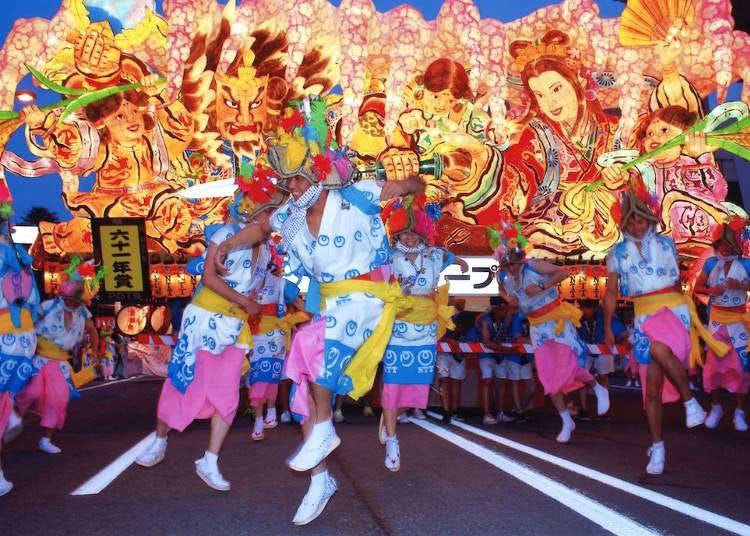
Festivals, known in Japanese as matsuri, are a deep part of Japan's culture. Many traditional festivals are held in Japan all throughout the year. There are also a number of seasonal events, from cherry blossom festivals to fireworks displays, and musical performances.
Here we share a fun-filled list of events and festivals held throughout the Kanto, Kansai, Hokkaido, and Tohoku regions, organized by month. When planning your trip to Japan, make your time more rewarding by enjoying a traditional Japanese festival!
(*All events listed are subject to change or cancellation in accordance with health and safety protocols.)
Top Photo: Aomori Tourism and Convention Association
January
Hatsumode (Nationwide)

・When: New Year's Eve to early January
・Where (in Tokyo): Sensoji Temple, Meiji Shrine (Meiji Jingu) and other shrines/temples.
Hatsumode is the first important event of the year for many people in Japan. On this day, people all over the country pay a visit to a shrine or temple and offer wishes and prayers for a safe and peaceful New Year.
Wakakusa Yamayaki (Nara Prefecture)

・When: 4th Saturday of January
・Where: Mount Wakakusa
Wakakusa Yamayaki is an annual tradition in which participants symbolically set fire to the dead grass of Mt. Wakakusa in Nara Park in honor of their ancestors.
Another big part of the event is raising awareness throughout Nara about fire safety and prevention, as well as to offers prayers for peace around the world. To top it all off, there's also a fireworks display! The incredible sight of the blazes both on land and in the sky is certainly something you won't want to miss!
Mt. Miune Rime Ice Festival (Nara Prefecture)

・When: Saturdays, Sundays, and holidays; late January to late February
・Where: Mitsue Youth Travel Village
For the Mt. Miune Rime Ice Festival, you'll need to hike up Mount Miune, which is famous for its magical landscapes of glittering rime ice. There are delicious mochi, amazake, and local specialty foods available at both the start and finish points of the trail. After your journey, you can even soak away your stress at the natural hot spring!
February
Setsubun (Tokyo)
・When: One day before the first day of spring (around February 4)
・Where: Sensoji Temple and other temples
At this Setsubun event, you'll watch as sumo wrestlers and 'toshi-otoko' (men born under the same Chinese zodiac sign as the current year) scatter beans, believed to drive away evil and attract good luck. Depending on the temple, you may also be able to catch dance performances and parades of "lucky men" and "lucky women" (men and women who throw the beans).
Sapporo Snow Festival (Hokkaido)

・When: Early February
・Where: Sapporo City Odori, Susukino, Tsudome, and others
The Sapporo Snow Festival is an annual winter tradition in Hokkaido, where 30,000 tons of snow are used to create all kinds of unique and original snow sculptures. You'll see sculptures in the likenesses of Japanese castles, world heritage sites, famous athletes, and even characters from manga, anime, and games!
Yokote Yuki Matsuri (Kamakura) (Akita Prefecture)

・When: February 15-16
・Where: Various locations in Yokote City
This Snow Festival has taken place in Yokote City for nearly 450 years. For this event, people place monetary offerings inside a kamakura, little igloo-like snow huts, to pray for the safety of their families. Inside the kamakura, local children welcome you with amazake and mochi, speaking in the local Akita dialect.
March
Mount Takao Fire Walking Festival (Tokyo)

・When: Second Sunday in March
・Where: Mt. Takao Yakuo-in, foot of the mountain, Jidosha Kitoden Square
Mount Takao is a sacred mountain and popular trekking spot located near the city center. The Fire Walking Festival (Hiwatari Matsuri) is the biggest event for practitioners of Shugendo. Held at Mt. Takao, the highlight of this event is watching the yamabushi (Buddhist monk) walk barefoot over eight square meters of burning embers! Regular visitors may also attempt crossing through the flames if you dare!
Ueno Cherry Blossom Festival (Tokyo)

・When: Late March to early April
・Where: Ueno Park
Ueno Park has been a popular cherry blossom viewing spot since the Kan'ei Period (1624-1644). But at the Sakura Matsuri (Cherry Blossom Festival), there's more to see than just flowers! Various other events are held, including the traditional Daikoku-mai dance and Kotobuki lion dance by the Ueno Music Preservation Society, the flower market, and the Aozora antique market.
Nishinomaru Garden Cherry Blossom Nighttime Illumination (Osaka Prefecture)

・When: Late March to mid-April
・Where: Osaka Castle Park
Osaka Castle Park is home to nearly 3,000 cherry blossom trees! One of the most popular sakura-season events is the Nighttime Cherry Blossom Viewing, held at Nishinomaru Garden.
April
Chichibu Shibazakura Matsuri (Saitama Prefecture)

・When: Mid-April to early May
・Where: Shibazakura no Oka (Moss Phlox Hill, south side of Hitsujiyama Park)
The Shibazakura Matsuri (Moss Phlox Festival) takes place in Chichibu, about an hour and a half away from central Tokyo. Hitsujiyama Park's Shibazakura no Oka is famous for its moss phlox, and Shibazakura Matsuri is held during peak season. Partake in events, indulge at delicious food stalls, and admire the stunning beauty of the colorful carpets of moss phlox!
Tateyama Kurobe Snow Corridor (Toyama Prefecture/Nagano Prefecture)

・When: Mid-April to mid-June
・Where: Tateyama Kurobe Alpine Route
The Snow Wall (Yuki no Otani) Festival is a traditional spring event that takes place along the Tateyama Kurobe Alpine Route, a road about 500 meters in length, and lined on both sides with towering walls of snow, nearly 20 meters in height! There's also a route you can travel by foot called the Snow Wall Walk, located near the bus stop. On Panorama Road, you can walk through the snow, and admire the fantastic landscape of the 3,000-meter mountains around you.
Goryokaku Park Cherry Blossom Night Illumination (Hokkaido)

・When: Late April to early May
・Where: Goryokaku Park
Goryokaku, located in Hakodate City, is an unusual star-shaped Japanese fort built in the late Edo Period, and a famous cherry blossom viewing spot. With nearly 1,600 trees in bloom, the annual night-time light-up event at Goryokaku Tower transforms the park into a magical fantasy landscape from 7-9 PM every sakura season!
Hirosaki Cherry Blossom Festival (Aomori Prefecture)

・When: Late April to early May
・Where: Hirosaki Park
The Hirosaki Cherry Blossom Festival draws in over 2 million tourists every year! There are about 2,600 cherry trees of 52 varieties planted throughout the park, and many ways to enjoy them! Stroll through the cherry blossom tunnel, check out Hirosaki Castle and the carpets of fallen petals across the moat, and be awed by the beautiful nighttime light-ups.
May
Higashimokoto Shibazakura Festival (Ozora-cho, Abashiri-gun)
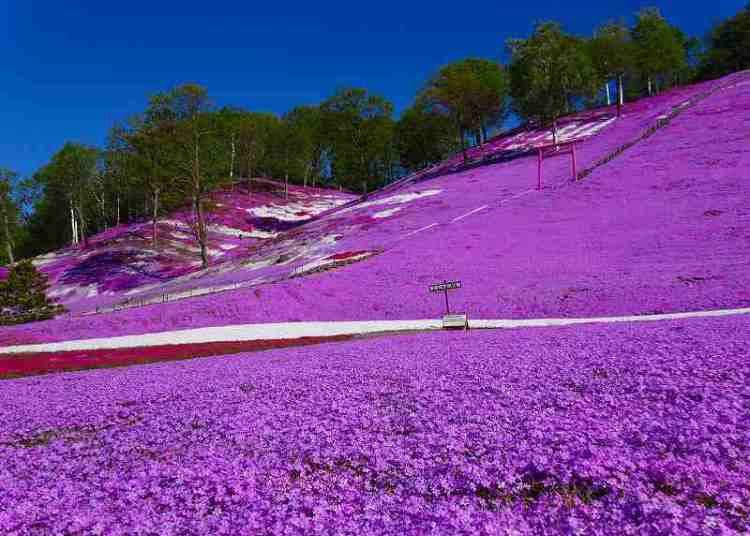
・When: May 3 - June 5
・Where: Higashimokoto Shibazakura Park
Higashimokoto Shibazakura Park is a 10-hectare field of moss phlox. During the Shibazakura Festival, the area is brought to life with stage performances, tours of the vast park grounds, night-time illuminations, and fireworks.
Aoi Matsuri (Kyoto Prefecture)
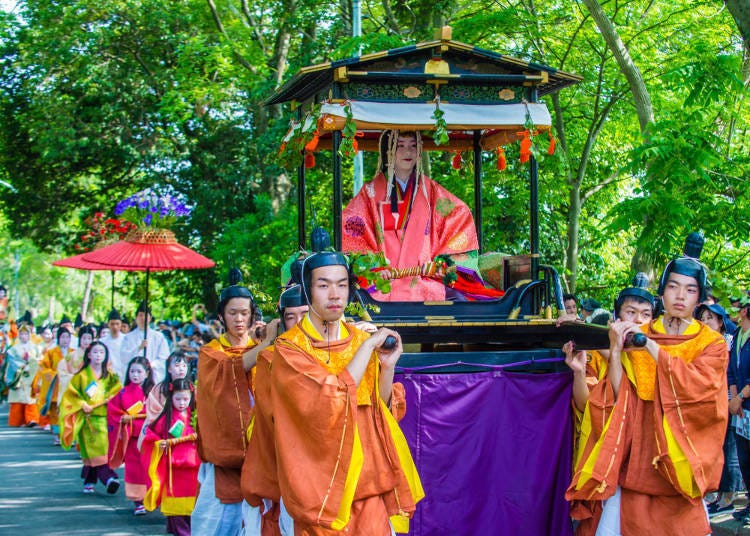
・When: May 15
・Where: Shimogamo Shrine / Kamigamo Shrine
Aoi Matsuri is a festival at Shimogamo Shrine and Kamigamo Shrine, where over 500 participants dress as Heian aristocrats and elegantly parade through the streets of Kyoto. The procession runs from Kyoto Imperial Palace to Shimogamo Shrine to Kamigamo Shrine and looks like scenery right out of a Japanese Heian picture scroll!
Kanda Matsuri (Tokyo)

・When: Saturdays and Sundays, held around May 15 every other year (next event scheduled for 2023)
・Where: Chuo-dori, Chiyoda-ku, Tokyo (Akihabara and others)
The Kanda Matsuri is one of the three major festivals of Japan, and takes place once every two years. The highlight of this event is the period procession, featuring a gorgeous mikoshi shrine known as "Horen" and enthusiastic shrine parishioners parading around, dressed in dazzling white costumes.
-

-
Address
Chuo-dori (Akihabara) and others in Chiyoda-ku, Tokyo, 101-0021
View Map -
Nearest Station
Ochanomizu Station (JR Chuo Main Line / Tokyo Metro Marunouchi Line / JR Sobu Line)
5 minutes on foot
- Phone Number 03-3254-0753
-
Address
Chuo-dori (Akihabara) and others in Chiyoda-ku, Tokyo, 101-0021
Sanja Matsuri (Tokyo)
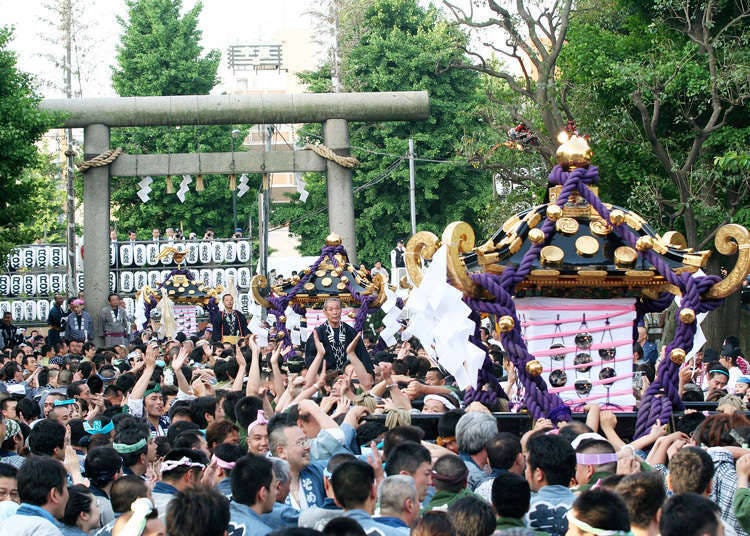
・When: Friday, Saturday, and Sunday, 3rd week of May
・Where: Asakusa Shrine
Sanja Matsuri is a three-day festival held at the famous Tokyo landmarks, Asakusa Shrine and Sensoji Temple. One of the highlights is Chonai Mikoshi Rengo Togyo, a procession that starts at noon on the second day and features nearly 100 mikoshi (portable shrines) being paraded through the streets. As part of the ritualistic "tamafuri" (soul-swaying) tradition, the shrine carriers aggressively rock and shake the mikoshi as they walk.
June
Sanno Matsuri (Tokyo)

・When: June 7-17
・Where: Hie Shrine
Hie Shrine has long been revered as a guardian deity of Tokyo, and the Sanno Festival held here is one of the most well-known in the area. A splendid procession of mikoshi shrines and floats parades through central cities like Ginza and Marunouchi, followed by a song and dance festival at Hie Shrine. Here, you can experience 'Sato Kagura' and 'Kagura Music,' two types of traditional Japanese ritual performance arts.
-

-
Address
Hie Shrine, 2-10-5 Nagatacho, Chiyoda-ku, Tokyo, 100-0014
View Map -
Nearest Station
Tameike-Sanno Station (Tokyo Metro Ginza Line / Tokyo Metro Namboku Line)
5 minutes on foot
- Phone Number 03-3581-2471
-
Address
Hie Shrine, 2-10-5 Nagatacho, Chiyoda-ku, Tokyo, 100-0014
YOSAKOI Soran Matsuri (Hokkaido)

・When: Early June
・Where: Odori, Sapporo City
The YOSAKOI Soran Matsuri is a colorful summer festival that takes place in Sapporo. Nearly 280 national and international dance teams perform in this major event, fascinating the audience with their unique costumes, hand-held clappers, and of course, their dancing!
Rice Paddy Art in Inakadate Village (Aomori Prefecture)
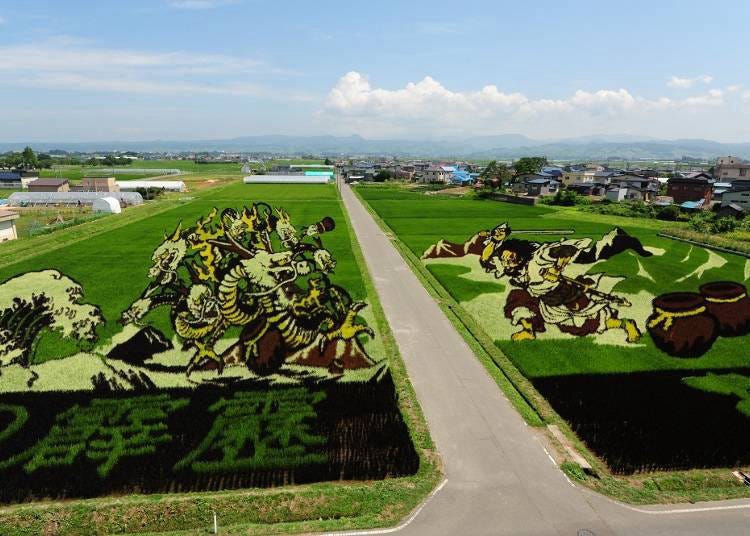
・When: Mid-June to early October
・Where: Inakadate-mura, Minamitsugaru-gun
Tambo (rice paddy) Art refers to gigantic, artistic masterpieces consisting of different colored rice plants that form words and images across the fields, transforming entire rice paddies into giant, colorful canvases! Inakadate Village uses seven colors and 13 varieties of rice in its designs, and there are even two observation decks from which you can view these magnificent masterpieces from above! Free shuttle buses operate between both locations from June to early October.
July
Gion Matsuri (Kyoto Prefecture)

・When: July 1-31
・Where: Yasaka Shrine
The Gion Matsuri is another of Japan's three major festivals, held annually at Yasaka Shrine. This event's highlights are the Yamaboko floats, lovingly dubbed as "moving art museums." The Yamahoko Junko is a procession of floats that parade through Kyoto City. The Sakimatsuri (July 17) parade features 23 floats, and the parade held during Atomatsuri (July 24) features ten. They have even been registered as UNESCO Intangible Cultural Heritage events!
Tenjin Festival (Tenjin Matsuri) (Osaka Prefecture)

・When: Late June to July 25 (Yoimiya event: July 24 / Hongu Ritual: July 25)
・Where: Osaka Tenmangu Shrine
Tenjin Matsuri boasts a history of over 1000 years and attracts nearly 1.3 million visitors annually. Various events are held over the course of a month, including two parades, the Rikutogyo (land procession) and the Funatogyo (sea procession). Because of this, the event has also been dubbed the 'Festival of Fire and Water.'
Ise Shrine National Dedication Fireworks Festival (Mie Prefecture)
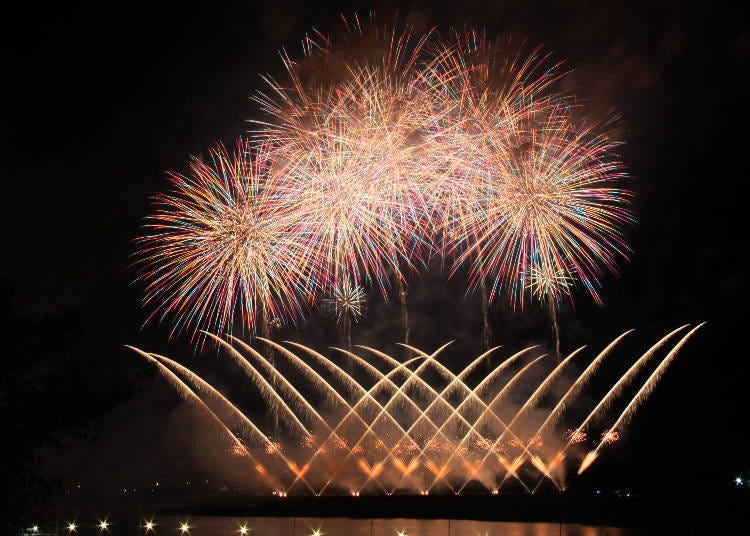
・When: Mid-July
・Where: Miyagawa Riverside, Ise City (Watarai Bridge, upstream location)
This fireworks competition takes place as a unique votive offering to Ise Jingu, one of the most notable shrines in Japan. As one of Japan's three major competitive fireworks festivals, this event showcases the passionate works of select pyrotechnicians from all across the country!
Nakafurano Lavender Festival (Hokkaido)

・When: Saturdays, mid-July
・Where: Hokuseiyama Lavender Garden
The Nakafurano Lavender Festival takes place in the popular city of Furano. A scenic lift takes you to the top of the hill in about five minutes, where you'll be greeted by a fantastic view of the Furano Basin, blanketed in purple hues of lavender. At night, you can even watch a lavender-themed fireworks display!
Sumidagawa Fireworks Festival (Tokyo)

・When: Last Saturday in July
・Where: Sumida River
One of Tokyo's most famous fireworks displays, this traditional event began in 1733 and currently attracts nearly one million spectators each year! This entertaining event dazzles the audience with fireworks competitions and displays consisting of nearly 20,000 creative fireworks.
Fuji Rock Festival (Niigata Prefecture)
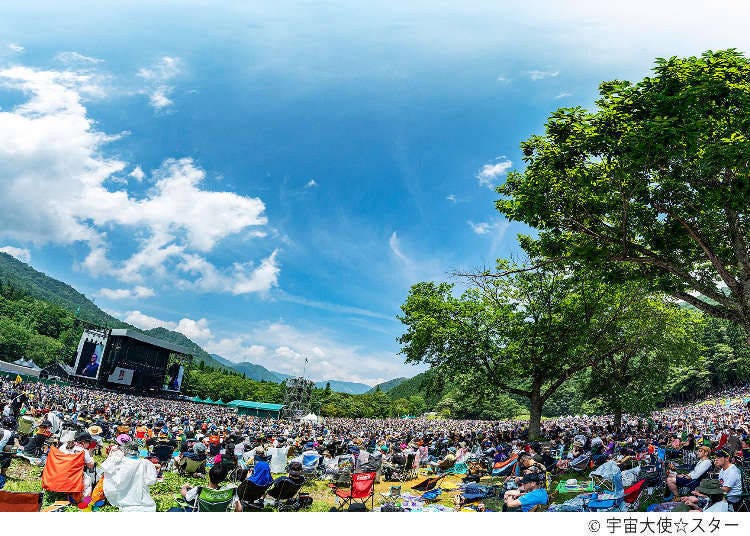
・When: 3 days, late July to early August
・Where: Naeba Ski Resort, Yuzawa Town, Niigata Prefecture
Fuji Rock Festival is Japan's largest outdoor festival. Over the course of three days, more than 200 musicians and over 100,000 spectators from all over the world come together to enjoy great music, the great outdoors, and a whirlwind of excitement. And there's more than just great music. This summer festival comes complete with a lineup of delicious food stalls, too!
August
Morioka Sansa Odori (Iwate Prefecture)
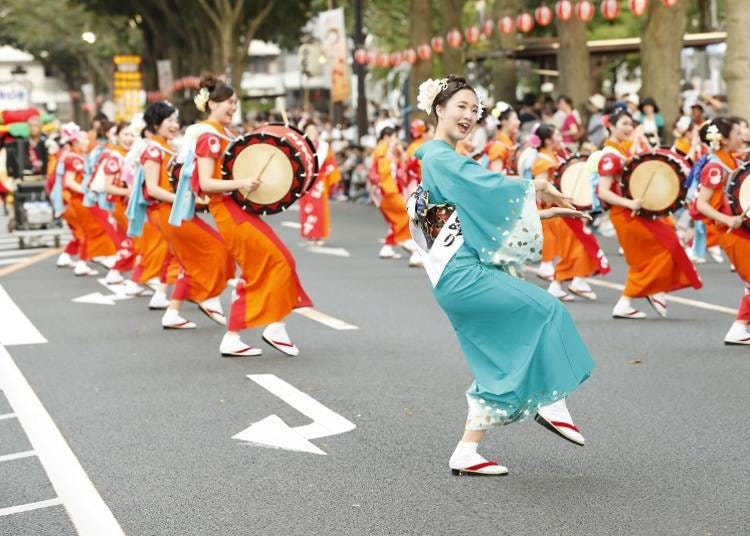
・When: August 1-4
・Where: Various locations in Morioka City, Iwate Prefecture
More than 30,000 dancers and taiko drummers rhythmically parade down Morioka City's Chuo-dori during the Sansa Parade. It begins with the 'Miss Sansa Odori,' a beautiful procession of dancers in stunning kimono. It finishes up with the 'Wa Odori,' a circle dance that visitors can participate in, too!
Nagaoka Festival Fireworks Display (Niigata Prefecture)

・When: August 2-3
・Where: Shinano-gawa Riverbed
One of Japan's three major fireworks festivals, the Nagaoka Matsuri Fireworks Display takes place over two days. It features a back-to-back launch of 100 size-10 fireworks balls, and the famous 'Shosan Shakudama,' a 650-meter-diameter fireworks type of overwhelming scale!
Aomori Nebuta Festival (Aomori Prefecture)

・When: August 2-7
・When: Central Aomori City, Aomori Prefecture
The Aomori Nebuta Festival is one of Japan's most notable summer festivals, in which giant lantern floats called 'Nebuta' and dancers called 'Haneto' parade around town. The designs are based on Japanese myths and folklore, and the procession itself lasts about 3.1km in length! Food stalls also offer delicious Japanese drinks and delicacies, drawing in crowds of spectators from Japan as well as abroad.
Sendai Tanabata Festival (Miyagi Prefecture)
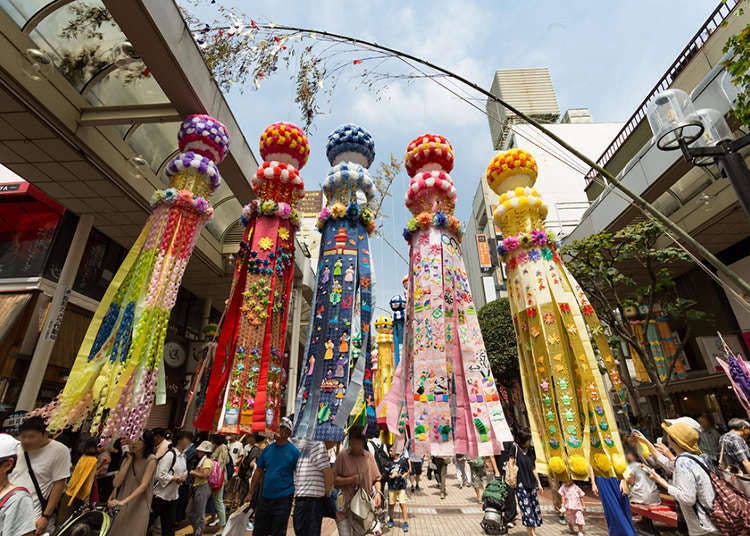
・When: August 6-8
・Where: Sendai City center and surrounding shopping streets
The Tanabata Festival is adorned with a variety of Fukinagashi - gorgeous bamboo decorations crafted by locals from colorful washi paper, which symbolize prayers for prosperity and health. There are many ways you can experience the traditions of Bon Odori at this festival. At the main venue, you can write down your own wishes on strips of paper, and even display them at the wishing strip corner! There are also plenty of food stalls from which you can sample all kinds of local specialties.
Kyoto Gozan Okuribi (Daimonji Festival) (Kyoto Prefecture)

・When: August 16
・Where: Five locations in Sakyo Ward, Kyoto City, Kyoto Prefecture
Gozan no Okuribi (Daimonji Festival) is a traditional summer event and the culmination of Obon. This ritual is believed to send off the souls of the departed who had returned for the Obon period. Every year on August 16, five bonfires are lit from around 8 PM on five mountain locations: Daimonji, Myoho, Funagata, Hidari-Daimonji, and Torii-gata. You can get a great view of these bonfires from the Kamogawa riverbank!
-

-
Address
5 locations in Sakyo Ward, Kyoto City, Kyoto Prefecture, 606-0000
View Map -
Nearest Station
Kitaoji Station (Karasuma Line)
- Phone Number 075-343-0548
-
Address
5 locations in Sakyo Ward, Kyoto City, Kyoto Prefecture, 606-0000
Noboribetsu Jigoku Matsuri (Hokkaido)
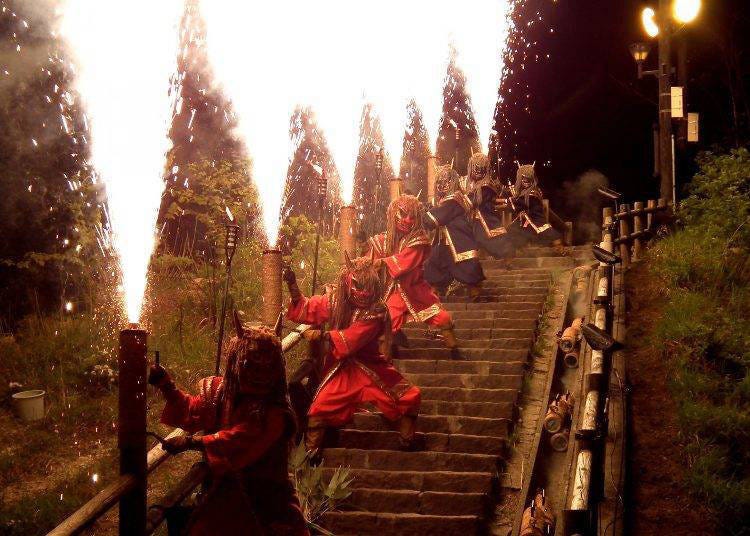
・When: Last Saturday/Sunday of August
・Where: Noboribetsu Onsen Town, Noboribetsu City
The Jigokudani Matsuri (literally "Hell Festival") gets its name from Noboribetsu Onsen's Jigokudani, or "Hell Valley." Join the celebration in this famous hot spring town with attractions related to Japan's folkloric oni (ogres/demons). There's Noboribetsu taiko drumming, oni-mikoshi (portable shrines), and oni (devil) dances. You'll even see the great Enma (the folkloric "King of Hell") parading through the streets! The event culminates with a grand display of fireworks, filling Jigokudani with brilliant, blazing lights.
National Fireworks Competition Omagari Fireworks (Akita Prefecture)
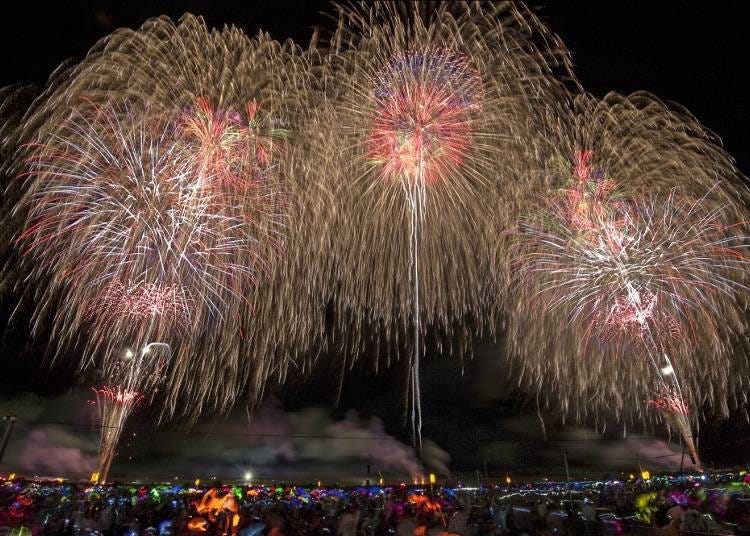
・When: Last Saturday in August
・Where: Omagari Fireworks Park, Omagari Omono Riverside, Daisen City
In this competition, fireworks artists from all over Japan put their ingenuity to work by crafting beautiful, original fireworks creations. These displays are combined with special fireworks, such as the 'Special Star Mine,' and upbeat music for a must-see spectacle of dazzling beauty and energy!
Asakusa Samba Carnival (Tokyo)
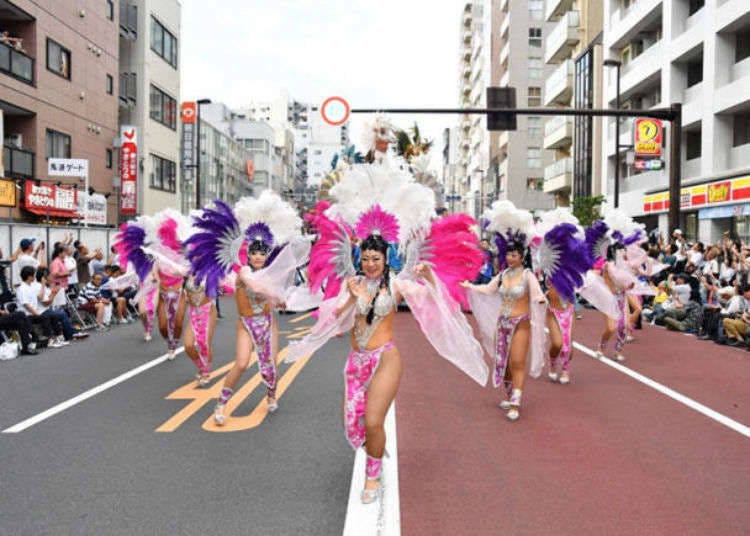
・When: Late August
・Where: Asakusa Umamichi-dori to Kaminarimon-dori
This contest-style parade is based on the original Rio Carnival. Nearly 20 samba teams perform dances near Basha Street, a famous tourist attraction in front of Sensoji Temple's Nitenmon Gate.
September
Sapporo Autumn Fest (Hokkaido)
・When: Mid-September
・Where: Sapporo Odori Park
This large-scale event takes place over three weeks and introduces a variety of cuisine from all over Hokkaido. Sample a wide range of exquisite local delicacies and specialty products from the municipalities and popular Sapporo shops, as well as international cuisine.
Kishiwada Danjiri Festival (Osaka Prefecture)

・When: Saturdays and Sundays, Mid-September to early October
・Where: Various locations in Kishiwada City, Osaka Prefecture
Danjiri are 4-ton, 4-meter-tall wooden floats that race through the city at aggressive speeds, making spectacular sudden turns called yarimawashi, while spectators cheer from the roadside. The daikugata are people who dance with hand-held fans atop the floats as they move, entrancing the audience with their bravery and overwhelming presence.
-
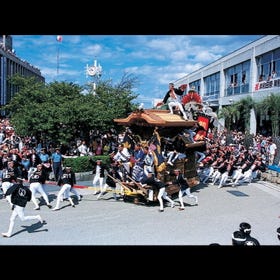
-
Address
Various places in Kishiwada City, Osaka Prefecture, 596-0000
View Map -
Nearest Station
Kishiwada Station (Nankai Airport Line / Nankai Line)
- Phone Number 072-423-9486
-
Address
Various places in Kishiwada City, Osaka Prefecture, 596-0000
October
Marimo Matsuri (Hokkaido)

・When: October 8-10
・Where: Lake Akan Onsen, Akan Town, Kushiro City
This festival comes from the indigenous Ainu people of Hokkaido. It began as a way to protect the Marimo, rare spherical balls of green alga found in Lake Akan. There are performances and Marimo observation sessions, a Torch Procession, and Ainu folk dances. The finale features a ceremony where Ainu people board a dugout canoe and return Marimo to Lake Akan.
Jidai Matsuri (Kyoto Prefecture)
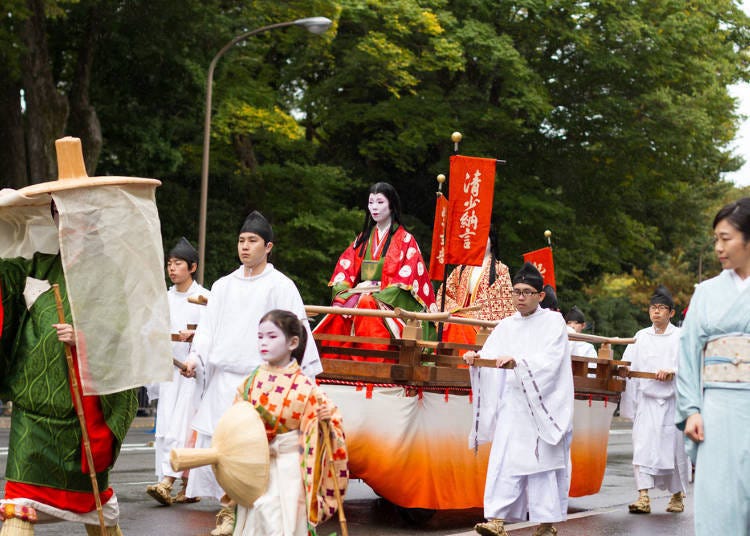
・When: October 22
・Where: Heian Shrine
Jidai Matsuri is an autumn festival held at Heian Jingu Shrine, featuring a long, historical procession stretching out for about 2km. This procession combines 20 parades in a reproduction of eight eras of Japan: the Meiji Restoration, Edo, Azuchi-Momoyama, Muromachi, Yoshino, Kamakura, Fujiwara, and Enryaku Periods. You'll also see geisha in the Heian Women's Procession, adding a touch of glamor to the historical scenery.
Hase-dera Momiji Matsuri (Special Autumn Viewing) (Nara Prefecture)

・When: Mid-October to early December
・Where: Hasedera Temple
Hasedera has long been known as the 'Temple of Flowers.' The Hasedera Momiji Matsuri is a fall festival that brings together the splendid views of the five-storied pagoda and the colorful autumn leaves. While there are a variety of events to enjoy, don't miss the special autumn viewing of the giant Kannon statue. During the festival period only, you can even enter the Main Hall (a Japanese National Treasure), which is usually closed to the public, and touch Kannon's feet yourself!
November
Jingu Gaien Ginkgo Festival (Tokyo)
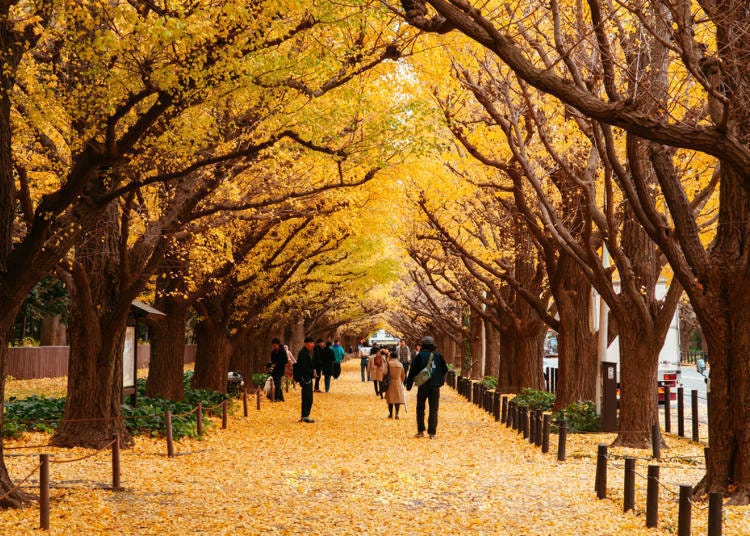
・When: Mid-November to early December
・Where: Meiji Jingu Gaien
Meiji Jingu Gaien is an avenue stretching 300m in length and lined with ginkgo trees, dyed in bright yellow hues during the festival. At the event, you can buy special goods and handicrafts from all over Japan and try delicious local foods. It's an event sure to be bustling with visitors from all over!
Osaka Festival of Lights (Osaka Prefecture)
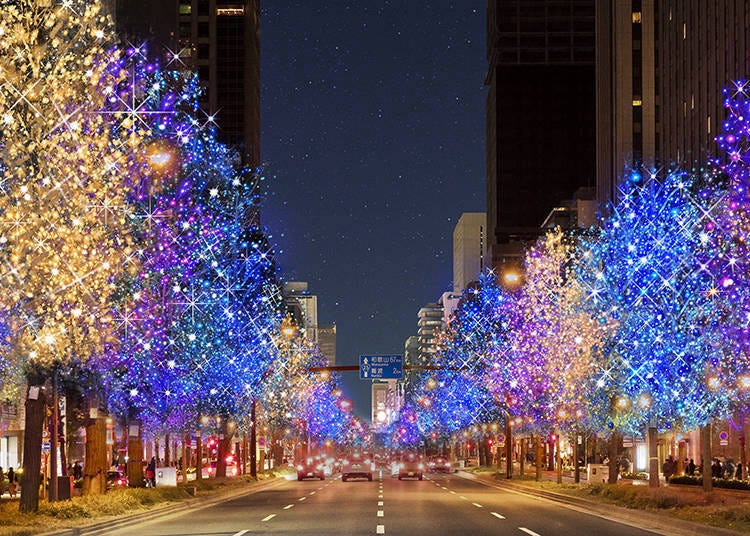
・When: Early November to late January
・Where: Nakanoshima, Kita-ku, Osaka
Osaka Hikari no Banen (or Festival of Lights) is an event that features brilliant illuminations in various places throughout Osaka. The illuminations along Midosuji, the most iconic street of Osaka, stretch from Umeda to Namba, for a total length of 4km! In Nakanoshima waterfront in Aqua Metropolis, one of Osaka's symbols, also boasts a stunning spectacle of lights that combines the waterfront scenery with projection mapping.
Marunouchi Illumination (Tokyo)

・When: Mid-November to mid-February
・Where: Marunouchi, Chiyoda-ku, Marunouchi Nakadori, Maru Building
Marunouchi Naka-dori is a 1.2km street lined with brand shops and over 220 trees. During this event, the entire stretch glows with nearly 1.2 million LED lights in Marunouchi's symbolic color, champagne gold.
MIDTOWN WINTER LIGHTS (Tokyo)

・When: Mid-November to December 25
・Where: Tokyo Midtown
This winter tradition takes place in Tokyo Midtown in Roppongi. Take a leisurely winter stroll through Hikari no Promenade, where glittering gold illuminations light up Midtown Garden. Then, check out the Snow Light Globe, a large, brilliantly glowing snow dome about 3m in height.
Sapporo White Illumination (Hokkaido)

・When: Late November to late December (Odori Park Venue)
・Where: Sapporo Odori Park and others
This winter event began as Japan's first illumination. At the main Odori Park venue, trees and other objects are spectacularly decorated with 780,000 lights. There's also the Munich Christmas Market, where you can enjoy Christmas goods, mulled wine, and German cuisine.
December
Chichibu Night Festival (Saitama Prefecture)

・When: December 2-3
・Where: Chichibu Shrine
This Chichibu Shrine festival is a symbol of Japan and a registered UNESCO Intangible Cultural Heritage. Watch the parade of fabulous floats and kabuki carts, then sit down for a large-scale fireworks display - a sight you don't usually see in the winter!
Hoshino Resorts Tomamu Ice Village (Hokkaido)
・When: Early December to mid-March
・Where: Hoshino Resort Tomamu Area
The Ice Village is a winter-only attraction held at Hokkaido's largest snow resort, Hoshino Resorts Tomamu. There are plenty of fun things to see and do, including the ice dome, an ice church, snow-themed shops, ice skating, and overnight accommodations at the dome (limited to one group per day).
Sendai Pageant of Starlight (Miyagi Prefecture)

・When: Mid-December to Dec. 31
・Where: Jozenji-dori, Sendai City
For this event, the zelkova trees along Sendai's main street Jozenji-dori are beautifully lit with nearly 420,000 LED bulbs, creating a beautiful tunnel of light known as the Sendai Pageant of Lights. Event contents vary by year, but some attractions you may see include concerts, street performances, and skating rinks.
Juhyo Light-up (Yamagata Prefecture)

・When: December 25 to late February of the following year
・Where: Zao Onsen, Yamagata City
The Zao mountain range is home to Japan's rare winter phenomenon called 'juhyo,' or frost-covered trees, and are affectionately dubbed 'snow monsters' for their appearance. During the illumination period, the ropeway operates at extended hours so that you can experience their overwhelming presence from above, at night!
No matter when you visit, there's always something fun to do in Japan! There are all kinds of traditional events and festivals, from New Year's shrine visits to parades of gorgeous floats, as well as seasonal events featuring flowers and castle scenery.
Many of these Japanese festivals also offer valuable opportunities to interact with the locals. Regardless of which festival you attend or in which season you visit, one thing is guaranteed: each event is a new chance to create unforgettable new memories, and enjoy the experience of a lifetime!
*Event schedules and contents subject to change/cancellation. Please check the official website of each event before going out.
Translated by: Krys Suzuki
*Prices and options mentioned are subject to change.
*Unless stated otherwise, all prices include tax.
Limited time offer: 10% discount coupons available now!
-
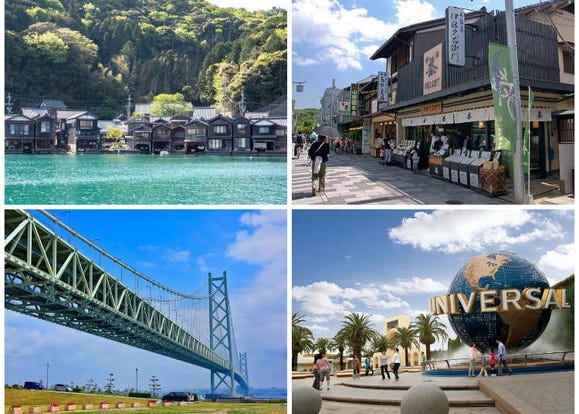
Unforgettable Summer Activities in Osaka & Beyond: Top 5 Kansai Tours to Book Now
-

Fall in Love After One Stay! 16 Popular Apartment Hotels in Osaka - Perfect for Family Trips and Travelling with Kids
-

7 Best Areas for Shopping in Kyoto: Where to Shop & What to Buy
-

Best Things to Do in Gion: How to Enjoy Kyoto's Geisha District
-

Gion Matsuri Guide (July 2023): Access and Tips on Enjoying One of Japan’s Three Great Festivals
-

What Are Yatai? Discover Japanese Festival Food Stalls Serving Up Classic & Trendy Street Food
-

Visiting Osaka's Iconic Tsutenkaku Tower: Fun Activities & Area Guide
-

5 Amazing Kyoto Festivals You’ll Want to Experience During Your Next Trip
- #best gourmet Osaka
- #things to do Osaka
- #what to do in kyoto
- #what to bring to japan
- #best gourmet Kyoto
- #new years in Osaka
- #what to buy in nanba
- #Visiting Osaka
- #onsen tattoo friendly arima
- #daiso
- #Visiting Kyoto
- #best japanese soft drinks
- #japanese fashion culture
- #japanese convenience store snacks
- #japanese nail trends
